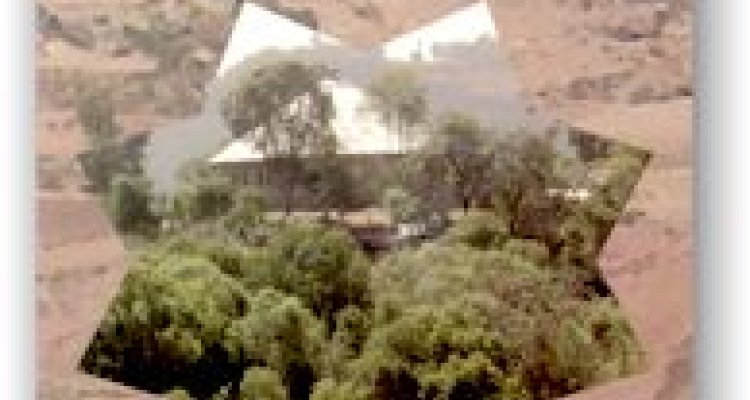
Edition
Ethiopian church forests: opportunities and challenges for restoration
Ethiopian church forests: opportunities and challenges for restoration.
Alemayu Wassie Eshete (2007).
PhD thesis, Wageningen University, Wageningen, The Netherlands. ISBN: 978-90-8504-768-; 204 pp.
In Northern Ethiopia almost all dry Afromontane forests have been converted to open agricultural lands. Only small isolated fragments remain around churches (“church forests”), but these are many. This study analyses the woody vegetation of these forests and its regeneration status and addresses the question if these forests could provide an opportunity for restoration of the Afromontane forests in the area.
The species and structural composition of 28 forests located at different altitudes (range 1816 to 3111 masl) and of various sizes (range 1.6 to 100 ha) was assessed, in relation to altitude, forest area and human influence. A total of 168 woody species (69 families) were recorded. Forest differed strongly in species number (15 to 78), basal area (4.8 to 111.5 m2/ha), density ( ≥ 5 cm dbh: 267 to 1553/ha; >1cm diameter: 619 to 2421/ha and; seedlings: 0 to 5263/ha). Altitude is the main factor determining species composition while human influence (particularly cattle grazing) determines structural composition of these forests. Forest area did not show a significant effect. For many tree species regeneration in most of these forests is very limited. Possible reasons for this limitation are addressed in field experiments.
Soil seed bank analysis on seven of these forests showed that these forests accumulate large quantities of persistent seeds of herbaceous species in the soil, but only five (6%) of the 91 woody species recorded in the standing vegetation of the seven forests were represented in their soil seed banks. Most of the tree species do not accumulate seeds in the soil. Considerable proportion of the tree seeds also encounter intense post dispersal predation.
For four selected tree species this study showed that livestock grazing is one of the main bottlenecks hampering seedling establishment, seedling survival and seedling growth. The study also explored how tree regeneration varies along the gradient from the forest interior to the edge and open fields, differs between canopy gaps and closed canopy sites inside the forest. Seedling establishment was more successful inside the forest than outside. The effect of canopy openness depends on the species. Seedling survival for three of the four species and seedling growth for all the species were highest in the outer edge of the forest.
Restoration experiments using management interventions (sowing seeds, planting seedlings, weeding, litter removal, soil scarification) show that the combined effect of seed sowing and litter removal increased seedling establishment significantly for all the species. Weeding did not improve seedling survival and growth of the species, and had even a negative effect on some of them.
The future existence of the woody flora and vegetation characteristic of dry Afromontane areas in Ethiopia depends on effective conservation and sustainable utilization of the remnant natural forest patches. Maintaining viable populations in the forests and providing connections between forests is pivotal in this respect. Excluding cattle interference and reducing intensity of wood harvest are a prerequisite to facilitate regeneration in church forests. Within the forest, opening up of the canopy may be required to facilitate seed germination and seedling performance depending on the species. Sowing seeds combining with litter removal and slight soil scarification can be very useful but weeding might not be needed. Seedling transplanting is another alternative to over come some of the bottlenecks of germination especially moisture deficit and intense seed predation . These measures improve tree regeneration of these remnant forests. Interconnecting these remnant forests by vegetation corridors following natural terrain or stream lines, creating buffer areas around them, and developing more patches in the landscapes are possible management activities. These will facilitate propagule and germplasm flow and ultimately may sustain these forests and help restoring the whole landscape.
Key words: Species richness and diversity, structural composition, soil seed bank, seed predation, livestock grazing, microsite, management, regeneration, restoration, church forest, dry afromontane forest, Ethiopia
Alemayehu Wassie Eshete defended his thesis on October 31, 2007
More information:
Contact:
Alemayehuw2004@yahoo.com or
Frans.Bongers@wur.nl